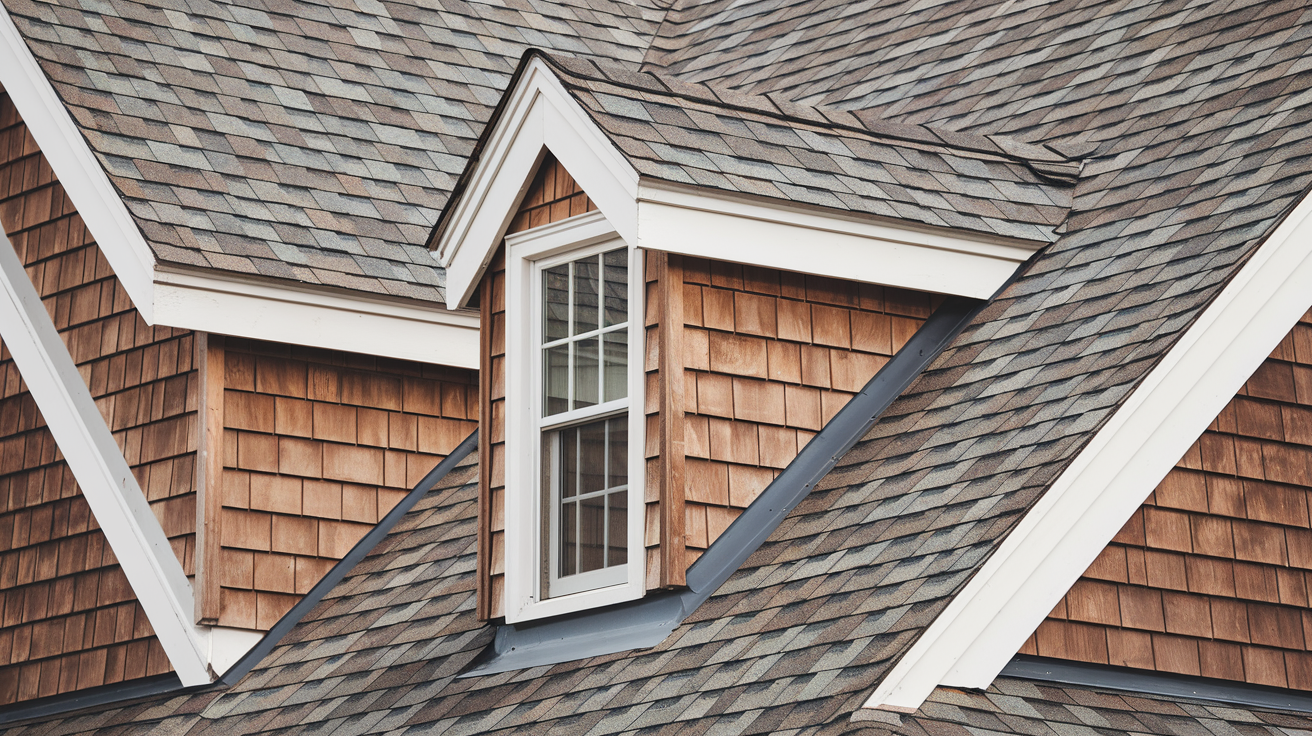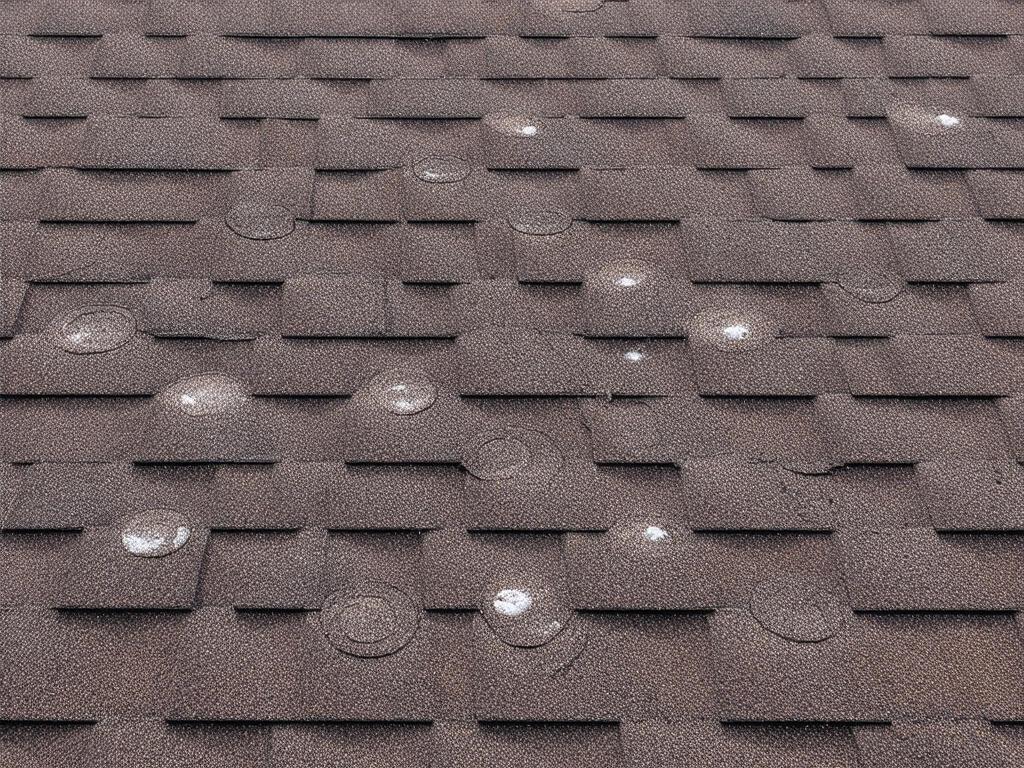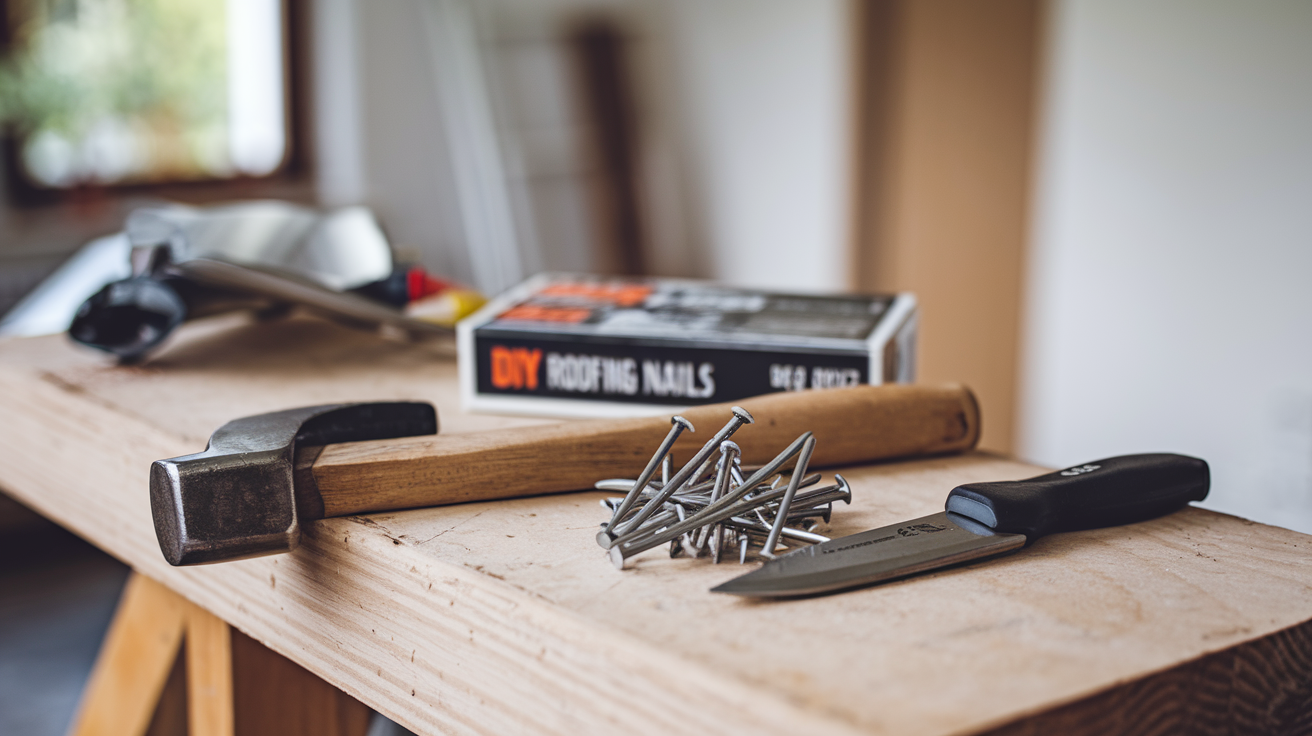Expert Guide: How to Spot Hail Damage on Your Roof (2024 Checklist)
Every year, hail causes an average of $850 million in property damage across the United States, with roofs being particularly vulnerable to these destructive storms. Many homeowners don't realize their roof has sustained hail damage until weeks or months later when leaks appear – by then, the repair costs have often multiplied. Understanding how to identify hail damage on your roof can save you thousands in preventable repairs and protect your home's structural integrity.
This comprehensive guide will walk you through everything you need to know about roof hail damage, from identifying subtle warning signs to understanding your insurance coverage options. You'll learn how to spot different types of hail damage, determine when professional inspection is necessary, and take steps to protect your home from future storms.
Whether you've recently experienced a hailstorm or want to be prepared for the next one, this article provides the essential knowledge every homeowner needs to protect their most valuable investment.
- Understanding Hail Damage
- Signs of Hail Damage on Your Roof
- Regional Considerations and Cost Implications
- Inspecting and Addressing Hail Damage
- Preventative Measures and Maintenance
Understanding Hail Damage
Hailstorms are powerful and destructive, causing significant property damage annually. In the United States, hail results in an average annual loss of $850 million to property, including roofs, vehicles, and crops (source: Property, 2021). Understanding hail damage is crucial for prompt repairs and preventing long-term structural issues. This section explains hail formation, the types of damage it inflicts, and why early identification is so important.
What is Hail and How Does it Form?
Hail is a type of frozen precipitation made of ice balls or lumps called hailstones. It develops inside strong thunderstorms with powerful updrafts and ample moisture. The formation process begins when updrafts lift raindrops into extremely cold regions of the atmosphere, where they freeze. As these frozen droplets are repeatedly carried up and down within the cloud by the updrafts, they accumulate layers of ice. This cycle can repeat several times before the hailstone becomes too heavy and falls to the ground (source: Weather Bureau, 2010). Sometimes, hailstones melt back into rain before reaching the ground if they pass through warmer air. Hailstones vary in size, ranging from small pea-sized pellets to much larger, more destructive sizes, occasionally even reaching the size of a baseball. Generally, hailstones larger than half an inch can cause damage. To assess your roof's condition after a hailstorm, consider getting a Get Your Roof Assessment.
<div class="table_criteria" style="display: flex; flex-direction: column; align-items: center; justify-content: center; margin: 20px 0;">
<table style="border-collapse: collapse; width: 100%;">
<caption style="font-weight: bold; margin-bottom: 10px;">Hailstone Size and Potential Damage</caption>
<thead>
<tr>
<th style="border: 1px solid #ddd; padding: 8px;">Hailstone Size</th>
<th style="border: 1px solid #ddd; padding: 8px;">Potential Damage</th>
</tr>
</thead>
<tbody>
<tr>
<td style="border: 1px solid #ddd; padding: 8px;">Pea-sized (< 0.5 inches)</td>
<td style="border: 1px solid #ddd; padding: 8px;">Minimal to no damage</td>
</tr>
<tr>
<td style="border: 1px solid #ddd; padding: 8px;">Half-inch to Quarter-sized (0.5 to 1 inch)</td>
<td style="border: 1px solid #ddd; padding: 8px;">Potential damage to roofs and vehicles</td>
</tr>
<tr>
<td style="border: 1px solid #ddd; padding: 8px;">Golf ball-sized (1.75 to 4.5 inches)</td>
<td style="border: 1px solid #ddd; padding: 8px;">Severe damage to roofs and structures</td>
</tr>
</tbody>
</table>
</div>Types of Hail Damage
Hail damage varies depending on the size and density of the hailstones. Hailstones larger than half an inch can damage roofs, with those between three-quarters of an inch and one inch (quarter-sized) and between one and three-quarters inches and four and a half inches (golf ball-sized) being especially destructive. Damage to asphalt shingle roofs might not be readily apparent. This is because the damage can be subtle, such as granule loss or bruising, which is difficult to detect from ground level. Common types of hail damage include:
- Granule Loss: Asphalt shingles frequently lose granules after a hailstorm. This appears as circular or radial spots where granules are missing. Granule loss weakens shingles and reduces their lifespan, increasing vulnerability to future damage. While granule loss doesn't automatically necessitate a roof replacement, it does make the shingles more susceptible to leaks over time. You can learn more about roof maintenance to understand the long-term implications of granule loss.
- Dents and Bruising: Metal roofs, gutters, and vents can sustain dents and bruising from hail, impacting both their appearance and function. This compromises their protective qualities and may lead to leaks. Bruising on a metal roof might appear as slight discolorations or depressions.
- Cracks and Holes: Large hailstones can crack or puncture shingles, creating openings for water intrusion and subsequent interior damage. These can range from small punctures to larger, more obvious holes, depending on the size and force of the hailstones. If you find cracks or holes, contact a roofing professional immediately to prevent further damage from water intrusion.
<div style="display: flex; flex-wrap: wrap; justify-content: space-around; margin: 20px 0;">
<div style="flex: 1; min-width: 250px; margin: 10px;">
<div role="complementary" aria-label="Granule Loss Information" style="border: 1px solid #ddd; padding: 10px; background-color: #f9f9f9;">
<h3 style="font-size: 1.2em;">Granule Loss</h3>
<p>Granule loss weakens shingles and reduces their lifespan, increasing vulnerability to future damage.</p>
</div>
</div>
<div style="flex: 1; min-width: 250px; margin: 10px;">
<div role="complementary" aria-label="Dents and Bruising Information" style="border: 1px solid #ddd; padding: 10px; background-color: #f9f9f9;">
<h3 style="font-size: 1.2em;">Dents and Bruising</h3>
<p>Bruising on metal roofs might appear as slight discolorations or depressions, impacting their function.</p>
</div>
</div>
<div style="flex: 1; min-width: 250px; margin: 10px;">
<div role="complementary" aria-label="Cracks and Holes Information" style="border: 1px solid #ddd; padding: 10px; background-color: #f9f9f9;">
<h3 style="font-size: 1.2em;">Cracks and Holes</h3>
<p>Cracks and holes can allow water intrusion, leading to further interior damage.</p>
</div>
</div>
</div>Why Identifying Hail Damage Early is Crucial
Early detection of hail damage is essential to protect your home and avoid costly repairs. While some hail damage is obvious, like broken windows or dented cars, roof damage is often subtle and hard to see from the ground. You can use binoculars or hire a professional roof inspector to identify roof damage. Ignoring hail damage can lead to serious problems like persistent leaks, mold growth, and higher repair costs. Even minor, initially invisible damage can weaken the roof and make it more vulnerable to future storms. This includes making areas of your roof more prone to leaks or failure in subsequent storms. If you can't afford immediate repairs, contact your insurance company to discuss coverage and possible financial assistance. Insurance coverage for hail damage varies by policy and company. Coverage isn't always comprehensive and depends on your specific policy and deductible. By recognizing the signs of hail damage and taking prompt action, you can protect your investment and ensure your home's long-term durability.

Signs of Hail Damage on Your Roof
Identifying hail damage on your roof is crucial for preventing long-term issues. These issues can lead to costly repairs, ranging from $700 to $4,000 depending on the severity. Hailstorms are a leading cause of property damage. In 2019, hail and wind accounted for 34.3% of all property damage claims in the U.S. (source: Homeowners, 2019). Understanding the signs of hail damage helps you take timely action and protect your home. This section guides you through the visual indicators of hail damage. It also highlights commonly affected areas and helps differentiate hail damage from other roof problems. Consider getting a roof assessment for a detailed evaluation.
Visual Indicators of Hail Damage
After a hailstorm, the most immediate signs of damage are usually visible. Look for small, round holes or patchy spots, classic indicators of hail impact.
What Hail Impacts Look Like
These impacts vary based on hail size and density. They often appear as circular or star-shaped depressions. Hail damage to asphalt shingles often shows as radial or circular areas of granule loss. This might not be immediately obvious. Granule loss can signify latent damage, potentially affecting roof lifespan.
What Granule Loss Means
Granules are the small, protective pebbles embedded in asphalt shingles. Losing these granules exposes the asphalt underneath. This makes it more susceptible to weathering and deterioration. You might also notice pockmarks, bruising, chipped shingle edges, or broken shingles. Even small hail can cause problems. Any hail larger than ½ inch, including quarter-sized (¾-inch to 1-inch) and golf ball-sized hail (1 ¾-inch to 4 ½-inch), can cause damage.
<div class="table_criteria" style="display: flex; flex-direction: column; align-items: center; justify-content: center; margin: 20px 0;">
<table style="border-collapse: collapse; width: 100%;">
<caption style="font-weight: bold; margin-bottom: 10px;">Common Indicators of Hail Damage</caption>
<thead>
<tr>
<th style="border: 1px solid #ddd; padding: 8px;">Indicator</th>
<th style="border: 1px solid #ddd; padding: 8px;">Description</th>
</tr>
</thead>
<tbody>
<tr>
<td style="border: 1px solid #ddd; padding: 8px;">Granule Loss</td>
<td style="border: 1px solid #ddd; padding: 8px;">Circular spots where granules are missing, exposing asphalt</td>
</tr>
<tr>
<td style="border: 1px solid #ddd; padding: 8px;">Dents</td>
<td style="border: 1px solid #ddd; padding: 8px;">Circular or star-shaped depressions on shingles</td>
</tr>
<tr>
<td style="border: 1px solid #ddd; padding: 8px;">Cracks</td>
<td style="border: 1px solid #ddd; padding: 8px;">Openings in shingles allowing water intrusion</td>
</tr>
</tbody>
</table>
</div>Common Areas on the Roof Affected by Hail
Not all roof parts are equally vulnerable to hail. Knowing where to focus your inspection is important.
Where to Look for Damage
Roof slopes facing the storm are often most damaged. They bear the brunt of the hail impacts. Heaviest damage concentrations usually indicate the direction the hail came from. Edges of shingles and ridge caps (the protective covering where roof slopes meet) are especially vulnerable. They can easily chip or break. Also, check metal flashing (around chimneys and valleys) and vents for dents. Metal is less flexible than shingles and shows hail impacts more readily. Learn more about roof maintenance to understand these vulnerabilities.
Differentiating Between Hail Damage and Other Roof Issues
Distinguishing hail damage from other roof problems is essential for accurate assessment and repair.
Recognizing Hail Damage Patterns
Hail damage has a random pattern. The impacts often resemble small craters or bruises. Damage from foot traffic or falling branches tends to be localized. Hail damage is typically spread wider. Damage from wear and tear, poor installation, or other weather follows a more predictable pattern. For instance, sun damage often causes uniform granule loss, while hail damage appears more sporadic. Consulting a professional is always recommended. Professionals can correctly identify the damage and recommend appropriate repairs. They can also determine the approximate size of the impacting hail. Understanding these signs helps with early hail damage detection. Taking prompt action prevents further deterioration and maintains your roof's integrity.

Regional Considerations and Cost Implications
Understanding the regional nuances and financial implications of hail damage is crucial for homeowners. Hailstorms don't affect all areas equally; some regions are significantly more prone to hail, leading to variations in repair costs and insurance considerations. By understanding these factors, you can better prepare for potential hail events and their aftermath.
Areas in the US Most Prone to Hail Damage
Hailstorms pose a significant threat in the United States, particularly in a region known as "Hail Alley." This area encompasses parts of Texas, Oklahoma, Kansas, Nebraska, and Colorado, where hailstorms are most frequent and severe (source: Elevate). The unique geography and climate of this region contribute to the formation of severe thunderstorms with strong updrafts. These updrafts lift moisture high into the atmosphere, where it freezes and forms hailstones. Texas, in particular, experiences a high concentration of hail damage. Over 1.5 million properties in Texas have been affected by hail, representing nearly 25% of all hail-damaged properties in the U.S. Homeowners in hail-prone regions should regularly inspect their roofs and consider using hail-resistant materials like impact-resistant shingles, metal roofing, or concrete tiles. These proactive measures can minimize damage and reduce long-term costs. For a comprehensive evaluation of your roof's resilience, consider our Get Your Roof Assessment.
<div class="table_criteria" style="display: flex; flex-direction: column; align-items: center; justify-content: center; margin: 20px 0;">
<table style="border-collapse: collapse; width: 100%;">
<caption style="font-weight: bold; margin-bottom: 10px;">Hail-Prone Regions in the US</caption>
<thead>
<tr>
<th style="border: 1px solid #ddd; padding: 8px;">Region</th>
<th style="border: 1px solid #ddd; padding: 8px;">Characteristics</th>
</tr>
</thead>
<tbody>
<tr>
<td style="border: 1px solid #ddd; padding: 8px;">Hail Alley</td>
<td style="border: 1px solid #ddd; padding: 8px;">Includes Texas, Oklahoma, Kansas, Nebraska, Colorado</td>
</tr>
<tr>
<td style="border: 1px solid #ddd; padding: 8px;">Texas</td>
<td style="border: 1px solid #ddd; padding: 8px;">High concentration of hail damage, affecting 1.5 million properties</td>
</tr>
</tbody>
</table>
</div>Typical Costs of Repair and Replacement
The cost of repairing hail damage to a roof can vary greatly. The extent of the storm's severity and the type of roofing material used are key factors influencing the final cost. Generally, hail damage repair costs range from $700 to $4,000. This range includes minor repairs, like replacing a few damaged shingles, and more substantial repairs involving structural damage. Surface damage typically falls on the lower end of the cost spectrum, while structural repairs require more extensive work and thus incur higher costs. Asphalt shingles, a popular roofing choice, can cost between $1 and $5 per square foot to replace, resulting in a total replacement cost between $1,700 and $8,400, depending on the roof's size. For instance, a 1,700 square foot roof could cost anywhere from $1,700 to $8,400 to replace entirely. Smaller repairs to metal roofs might cost around $300. These costs can accumulate, especially after a severe hailstorm. Regular roof maintenance and prompt repairs of minor hail damage can prevent more significant problems and expenses later. Early detection of hail damage can also prevent issues like leaks and mold growth, which can lead to additional costs. To learn more about roof maintenance, visit our comprehensive guide.
Insurance Coverage and Deductibles
Homeowners' insurance plays a vital role in mitigating the financial impact of hail damage. Most homeowners' insurance policies cover hail damage, but the specific coverage and terms can differ significantly. It's essential to understand the details of your policy, including your deductible. The deductible is the amount you must pay out-of-pocket before your insurance coverage kicks in. For example, if your deductible is $500 and your repair costs total $2,000, you would pay the $500 deductible, and your insurance would cover the remaining $1,500. Some insurance policies have separate deductibles for wind and hail damage, a practice that is becoming more common. This means you might have one deductible for wind damage and a separate, often higher, deductible specifically for hail damage. The average insurance payout for hail damage roof repairs is approximately $12,000. However, this amount can vary based on the severity of the damage, your location, and the specifics of your insurance policy. This average encompasses a wide range of repairs, from minor fixes to complete roof replacements. Carefully review your insurance policy to understand your coverage limits and deductible. Contact your insurance agent to discuss your coverage and deductibles, especially before hail season begins. This proactive step can help you avoid surprises and ensure you're adequately protected.

Inspecting and Addressing Hail Damage
Hailstorms can severely damage your roof, leading to costly repairs if not addressed promptly. Repair costs can range from $700 to $4,000, depending on the severity. Inspecting and addressing hail damage is crucial for protecting your home. Hail damage can be difficult to spot, often appearing as subtle signs easily missed by an untrained eye. For instance, granule loss on asphalt shingles, a common indicator of hail damage, might not be immediately obvious. This granule loss is considered latent damage. While it might not cause immediate problems, it can shorten your roof's lifespan and reduce its effectiveness over time. Inspecting your roof after a storm can prevent further damage and protect your home. Knowing when to call a professional versus attempting DIY repairs can also save you time and money. Consider scheduling a Get Your Roof Assessment for a comprehensive evaluation.
Safety Precautions Before Inspection
Before inspecting your roof, prioritize safety. Roof inspections can be dangerous without the right precautions.
Ladder Safety
Always use a sturdy ladder placed on a stable, level surface. If the ground is soft or uneven, place a board under the ladder's feet. Wear non-slip shoes to prevent falls, especially on a wet or slippery roof.
Weather and Awareness
Avoid inspecting your roof on windy days. Increased risk of accidents makes it unsafe. If you are uncomfortable with heights or unsure about the inspection process, contact a professional. This is especially important if the damage appears extensive, as professionals have the proper safety equipment.
<div style="display: flex; flex-wrap: wrap; justify-content: space-around; margin: 20px 0;">
<div style="flex: 1; min-width: 250px; margin: 10px;">
<div role="complementary" aria-label="Ladder Safety Tips" style="border: 1px solid #ddd; padding: 10px; background-color: #f9f9f9;">
<h3 style="font-size: 1.2em;">Ladder Safety</h3>
<ul>
<li>Use a sturdy ladder</li>
<li>Place on stable surface</li>
<li>Wear non-slip shoes</li>
</ul>
</div>
</div>
<div style="flex: 1; min-width: 250px; margin: 10px;">
<div role="complementary" aria-label="Weather Awareness Tips" style="border: 1px solid #ddd; padding: 10px; background-color: #f9f9f9;">
<h3 style="font-size: 1.2em;">Weather and Awareness</h3>
<ul>
<li>Avoid windy days</li>
<li>Contact professionals if unsure</li>
</ul>
</div>
</div>
</div>Communication
Tell someone when you begin and expect to finish your inspection. This precaution ensures someone knows your location in case of an emergency.
Step-by-Step Guide to Inspecting Your Roof
Inspecting your roof after a hailstorm requires a systematic approach.
Ground Inspection
First, check the ground around your home for debris. Pieces of roofing material, like shingles, flashing, or vent parts, can indicate significant damage.
Gutter Inspection
Next, examine your gutters and downspouts. Dents or granules, the small, sand-like particles coating asphalt shingles, suggest impact damage. Granule loss makes shingles more vulnerable to weathering and UV rays.
Roof Inspection
Once on the roof, look for small, round holes or areas with worn-away granules, common signs of hail impacts. These impacts can also look like bruises or pockmarks. Check for cracked or missing shingles, as these can cause leaks. Even small cracks allow water penetration, so inspect carefully.
Inspecting Vulnerable Areas
Pay close attention to roof vents, skylights, and chimneys. These areas are particularly susceptible to hail damage. The metal flashing around these areas can be dented or punctured, compromising its ability to prevent leaks. Learn more about roof maintenance to understand the importance of these components.
When to Call a Professional vs. DIY Repairs
Deciding between DIY repairs and hiring a professional depends on the damage and your comfort level.
Minor Repairs
Minor issues, like a few missing granules or small dents, might be suitable for DIY enthusiasts. However, even minor damage can indicate underlying problems. For example, missing granules could signify deeper shingle bruising, leading to future issues.

Major Repairs
Significant damage, such as cracked shingles or structural problems, requires professional attention. Professionals have the expertise and tools to assess and repair damage correctly, preventing future problems like leaks and mold. Ignoring hail damage can lead to costly long-term issues like persistent leaks and structural damage.
Insurance Claims
Many insurance companies require professional assessments for claims. Involving a professional can benefit the claims process, especially if you plan to file a hail damage roof insurance claim.
Preventative Measures and Maintenance
Hailstorms frequently cause significant roof damage, leading to costly repairs and insurance claims. In 2019, wind and hail damage accounted for 34.3% of all property damage claims nationwide. Repair costs can range from $700 to $4,000, depending on the severity, with average insurance payouts around $12,000. Preventative measures and regular roof maintenance can save homeowners time and money. Proactive measures can also extend the lifespan of your roof and enhance your property's value.
Installing Hail-Resistant Roofing Materials
One of the best ways to protect your roof is by installing hail-resistant materials. These materials are designed to withstand hailstone impacts, which can range from the size of a quarter (¾-inch to 1-inch) to a golf ball (1 ¾-inch to 4 ½-inch) or larger. Even small hailstones (½ inch) can cause damage.
Impact-Resistant Shingles
Impact-resistant shingles are rated based on their hail resistance. Class 4 offers the highest rating under the UL 2218 standard. These shingles undergo rigorous testing, including steel ball impacts that simulate hail. Homes in hail-prone regions, such as the Midwest and Great Plains, benefit significantly from these durable materials. Get Your Roof Assessment to determine if impact-resistant shingles are right for your home. Installing them may also reduce homeowner's insurance premiums, as many insurers offer discounts for these materials.
<div style="display: flex; flex-wrap: wrap; justify-content: space-around; margin: 20px 0;">
<div style="flex: 1; min-width: 250px; margin: 10px;">
<div role="complementary" aria-label="Impact-Resistant Shingles Info" style="border: 1px solid #ddd; padding: 10px; background-color: #f9f9f9;">
<h3 style="font-size: 1.2em;">Impact-Resistant Shingles</h3>
<ul>
<li>Rated Class 4 under UL 2218</li>
<li>Simulate hail impacts with steel ball tests</li>
<li>Reduce insurance premiums</li>
</ul>
</div>
</div>
</div>Regular Roof Maintenance Tips
Regular maintenance is essential for a healthy roof that can withstand hailstorms.
Scheduled Inspections
Schedule periodic roof inspections, ideally twice a year – once in spring and once in fall. Temperature changes during these seasons can stress roof materials. Learn more about roof maintenance to understand the importance of regular inspections.
Inspection Checklist
During inspections, look for:
- Loose shingles
- Clogged gutters
- Weakened areas
- Missing granules on asphalt shingles (can cause leaks)
- Cracks in tiles
Additional Maintenance
Regular maintenance also includes:
- Clearing debris (leaves, branches)
- Ensuring proper drainage to prevent water buildup and structural damage
Addressing minor issues promptly prevents more extensive, costly damage after a hailstorm. For example, a few loose shingles can become a much larger damaged area in a hailstorm if not repaired.
Understanding Weather Alerts and Taking Precautions
Being aware of weather alerts and taking precautions can minimize hail damage. Meteorological services offer real-time alerts about approaching storms through various channels (e.g., smartphone apps, weather radios, local news).
Actions During a Hailstorm Alert
When you receive a hailstorm alert:
- Secure outdoor furniture and vehicles to prevent property damage.
- If possible, inspect your roof for pre-existing issues that could worsen, like loose or damaged shingles.
Understanding local weather patterns and staying informed helps you protect your home. Combining this knowledge with proactive measures mitigates the impact of hailstorms. Knowing your area's hail season allows for increased vigilance during those months. This might include more frequent roof checks or ensuring clear gutters.
Disclaimer: This blog post is intended for informational purposes only and should not be considered professional roofing advice. Always consult with qualified roofing contractors and insurance professionals for specific guidance regarding your individual circumstances.
